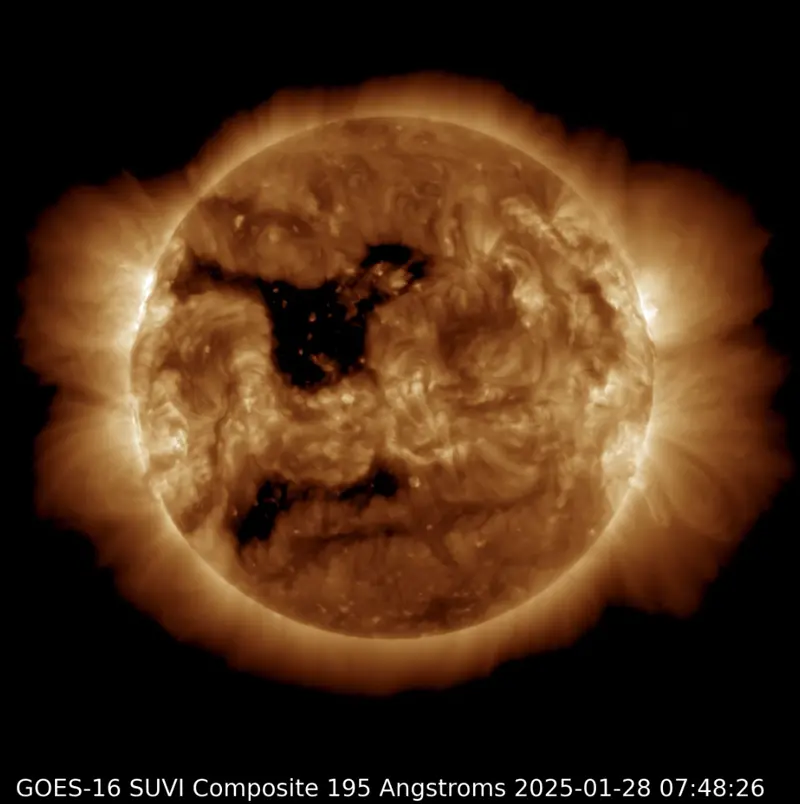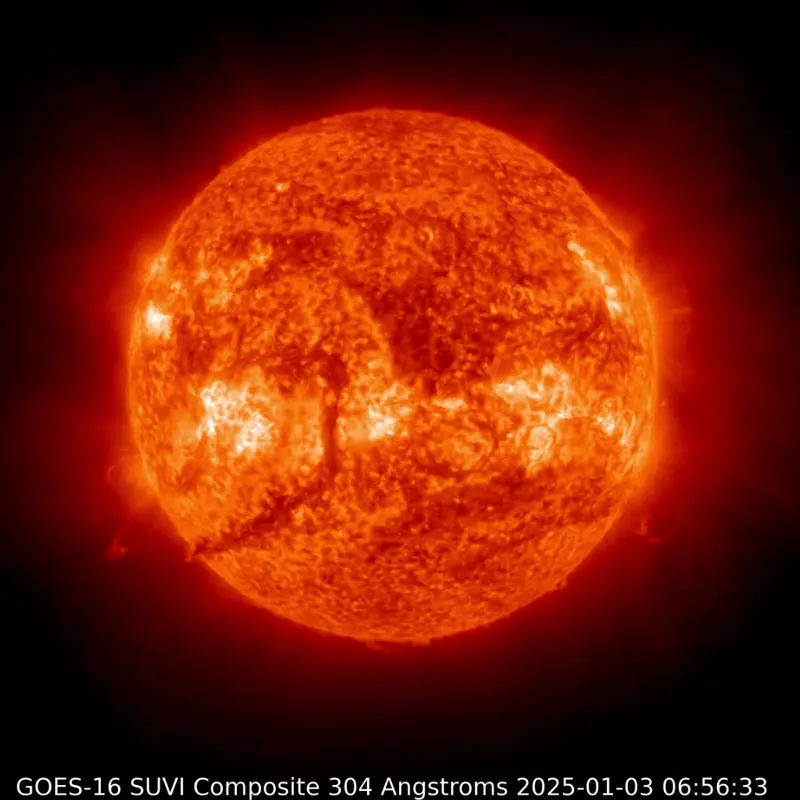PUNCH
Polarimeter to UNify the Corona and Heliosphere
Capturing the Sun’s Influence Like Never Before

PUNCH Will Reveal How the Sun Shapes Space
PUNCH (Polarimeter to UNify the Corona and Heliosphere) is a groundbreaking NASA mission launching in March 2025. It will track how the Sun’s outer atmosphere turns into the solar wind—a constant stream of charged particles that fills the solar system and affects Earth.
🚀 Stay tuned as PUNCH prepares to unlock the secrets of the solar wind!
🚀 Launch Date: Tuesday, March 11, 2-25 11:10 p.m. EDT (8:10 p.m. PDT)
🌍 From Space Launch Complex 4 East (SLC-4E) at Vandenberg Space Force Base in California.
PUNCH is launched with another mission, SPHEREx.
Watching the Solar Wind in Motion
PUNCH will provide the first continuous, wide-field view of the solar wind, helping scientists see how structures move and evolve as they travel through space.
☀️ Understand the Sun’s Impact on Space
The solar wind shapes the environment around Earth and other planets.
🌎 Better Space Weather Predictions
PUNCH will help us improve forecasts of solar storms that can disrupt power grids, satellites, and communications.
🛰️ A Unique View of the Solar System
Instead of looking directly at the Sun, PUNCH will track how its energy spreads outward.
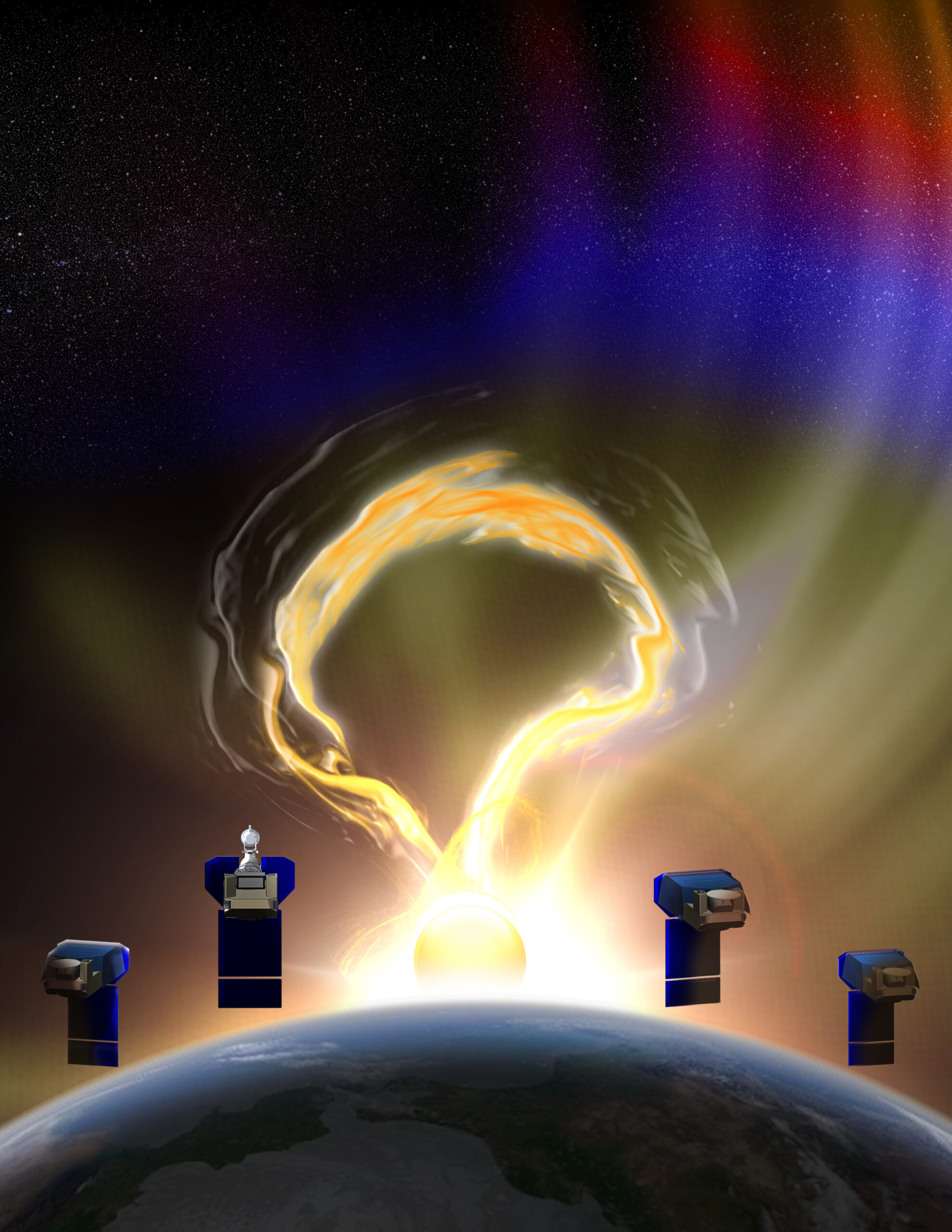
Image Credit: Courtesy of Southwest Research Institute
Making the Invisible Visible
The Sun’s corona and solar wind are billions of times fainter than the Sun itself, making them extremely difficult to observe.
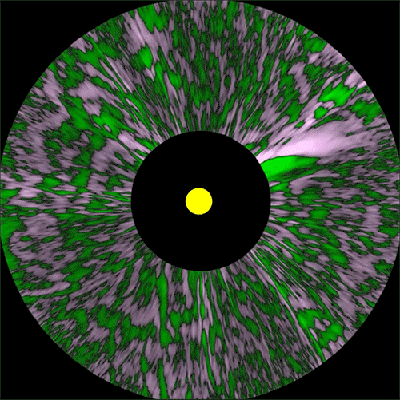
PUNCH overcomes this challenge with:
☀️ Deep baffles that reduce direct sunlight by a factor of 10 million billion.
☀️ Advanced image processing that removes over 99% of background light.
☀️ Polarized imaging technology to track the speed & motion of solar storms in 3D.
🔭 With these cutting-edge tools, PUNCH will reveal the hidden structure of the solar wind, giving us an unprecedented view of how solar storms evolve and travel through space. 🚀☀️
A Fleet of Four Small Satellites Will Work Together
PUNCH consists of four suitcase-sized satellites that will orbit Earth and work together like a single, giant camera. They will:
☀️ See the solar wind as it forms and expands
☀️ Track coronal mass ejections (CMEs) as they travel
☀️ Capture large-scale solar structures like never before
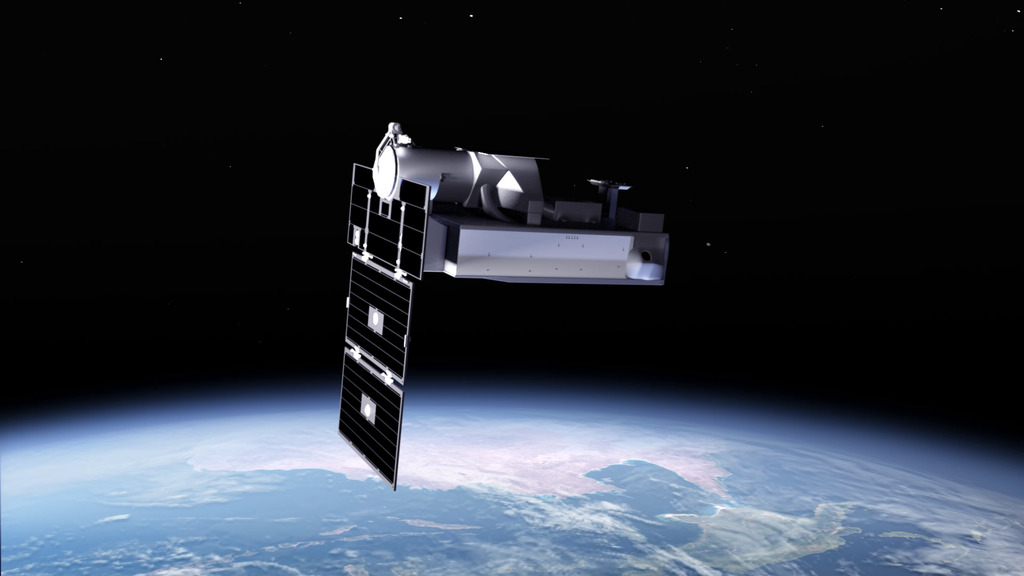
A Virtual Telescope the Size of Earth
NASA selected Southwest Research Institute to lead a microsatellite mission, PUNCH, which proposes a constellation of four suitcase-sized satellites orbiting Earth to image the Sun’s outer corona and study how its structures connect with the interplanetary medium, better understanding how they infuse the solar wind with mass and energy.
Following launch, the four PUNCH satellites will spread out in low-Earth orbit along the day-night line, allowing them to remain in sunlight with a full view of space.
“The PUNCH mission will study the solar corona, the Sun’s outer atmosphere, and the solar wind that fills and defines our solar system as a unified, integrated system. To get the data we need, we had to create an instrument as large as the Earth. That wasn’t possible, so we used four small spacecraft, synchronized and spread around the Earth, to create a virtual instrument 8,000 miles wide, imaging a quarter of the sky, centered on the Sun.”
PUNCH is going to make the invisible visible, using deep baffles and state-of-the-art image processing to reveal the extremely faint glimmer of the solar wind.
“Deep baffles in our wide-field imagers reduce direct sunlight by over 16 orders of magnitude or a factor of 10 million billion — the ratio between the mass of a human and the mass of a cold virus. Then state-of-the-art processing on the ground removes the background starfield, over 99% of the light in each image, to reveal the extremely faint glimmer of the solar wind.”
“While PUNCH is a research mission, we will be able to track space storms, or coronal mass ejections, in three dimensions as they approach the Earth — this is critical to forecasting space weather and how it might affect us as a space-faring society. We hope PUNCH will help revolutionize space weather forecasting in the same way that geosynchronous satellites revolutionized weather forecasting on Earth.”
– Quotes from Dr. Craig DeForest, PUNCH Principal Investigator at SwRI’s Solar System Science and Exploration Division
PUNCHing Through the Sun’s Mysteries
Scientists still don’t fully understand how the solar corona transitions into the solar wind, and PUNCH aims to fill this gap.
It will provide a crucial missing link in our understanding of the Sun’s influence on the entire solar system.
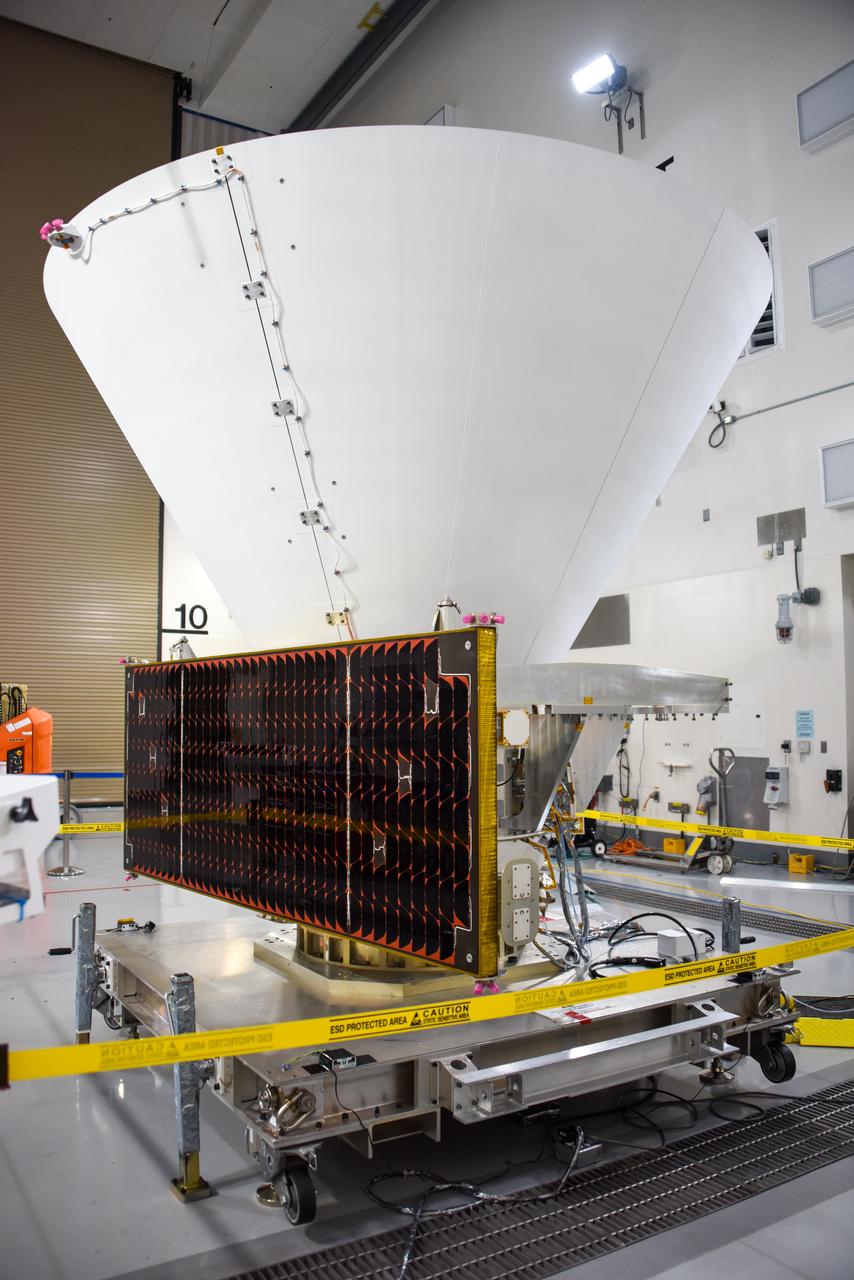
CREDIT: NASA & USSF 30th Space Wing/Christopher
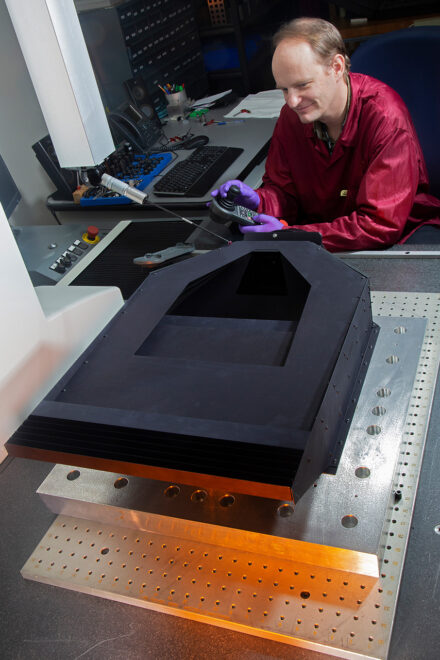
Credit: Courtesy of Southwest Research Institute
Designed to Answer Big Questions
🔎 How does the solar corona become the solar wind?
- Scientists know that the Sun’s corona extends into space, but how and when it transitions into the solar wind remains a mystery.
- PUNCH will capture this process in real time, revealing how solar material accelerates and spreads throughout the solar system.
🌪 What happens to coronal mass ejections (CMEs) as they move through space?
- CMEs are giant eruptions of solar plasma that can disrupt satellites and power grids.
- PUNCH will track them from the moment they leave the Sun until they reach Earth, giving us a clearer picture of how they evolve.
📡 How does space weather form and impact Earth?
- The solar wind and CMEs interact with Earth’s magnetic field, sometimes triggering geomagnetic storms.
- PUNCH will help scientists predict which solar events are likely to cause disruptions, improving space weather forecasting.
🌀 What causes the structures and turbulence in the solar wind?
- The solar wind is not a smooth stream—it has mysterious structures, waves, and turbulence.
- By observing the solar wind in 3D, PUNCH will help explain why these variations occur and how they affect spacecraft and astronauts.
Cutting-Edge Instruments
How PUNCH Sees the Invisible
PUNCH’s spacecraft are equipped with advanced instruments designed to detect the faint, fast-moving structures in the solar wind.
🔍 Wide-Field Imagers (WFI)
These cameras capture a panoramic view of the Sun’s corona and its expansion into space, revealing how solar material moves and interacts with Earth’s magnetic field.
📸 Narrow-Field Imager (NFI)
A high-resolution camera that focuses on fine details of coronal mass ejections (CMEs) and how they evolve as they travel toward Earth.
🌟 Polarization Techniques
By measuring the scattered sunlight from electrons in space, PUNCH will provide a 3D-like view of solar wind structures, giving us the most detailed look yet at how solar material travels through space.
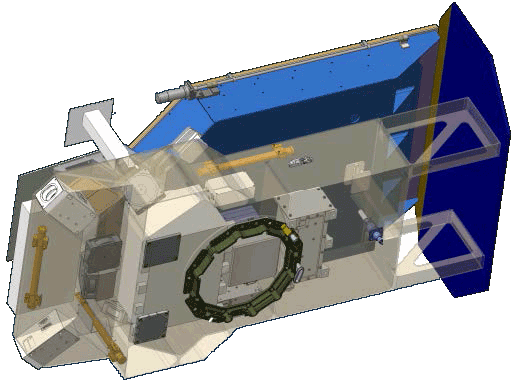

Why Should You Care?
The Impact of Space Weather on Earth
PUNCH isn’t just about understanding the Sun—it’s about protecting our modern world. Space weather driven by solar activity can disrupt technology, impact daily life, and pose risks to astronauts and spacecraft.
⚡ Power Grid & Infrastructure Resilience
Strong solar storms can cause blackouts, like the 1989 Québec blackout that left millions without power. PUNCH will help improve early warnings.
📡 Protecting GPS & Communications
Solar storms can scramble GPS signals used for navigation, aviation, and even precision agriculture. Without reliable GPS, industries lose billions.
🚀 Shielding Spacecraft & Astronauts
The solar wind carries radiation that can damage satellites and pose health risks to astronauts. Future Moon and Mars missions depend on better space weather predictions to keep astronauts safe.
💻 National Security & Global Economy
The U.S. military, private space companies (like SpaceX and Blue Origin), and even financial markets rely on space weather forecasts to prevent major disruptions to critical systems.
